 | TODAY IN SCIENCE HISTORY
NEWSLETTER - 24 JANUARY |
 On 24 Jan 1872, Morris William Travers was born, who discovered the element krypton. Today's Science Store pick is: The Noble Gases (Science & Discovery Series), by Isaac Asimov. This is one of your webmaster's favorite books, since the discovery, nature and uses of all these almost chemically inert elements are presented in Asimov's well-known highly-readable style. It makes a fascinating and informative read, and is highly recommended for your bookshelf. Although published in 1966, this gem can still be found. It is available New from $539.43. Used from $29.95. (As of time of writing.). On 24 Jan 1872, Morris William Travers was born, who discovered the element krypton. Today's Science Store pick is: The Noble Gases (Science & Discovery Series), by Isaac Asimov. This is one of your webmaster's favorite books, since the discovery, nature and uses of all these almost chemically inert elements are presented in Asimov's well-known highly-readable style. It makes a fascinating and informative read, and is highly recommended for your bookshelf. Although published in 1966, this gem can still be found. It is available New from $539.43. Used from $29.95. (As of time of writing.). | | For picks from earlier newsletters, see the Today in Science History Science Store home page. | |
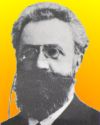 | Psychology has a long past, yet its real history is short. - Hermann Ebbinghaus, German psychologist (born 24 Jan 1850).  |
 | After that cancellation [of the Superconducting Super Collider in Texas, after $2 billion had been spent on it], we physicists learned that we have to sing for our supper. ... The Cold War is over. You can't simply say “Russia!” to Congress, and they whip out their checkbook and say, “How much?” We have to tell the people why this atom-smasher is going to benefit their lives. - Michio Kaku, American theoretical physicist (born 24 Jan 1947).  |
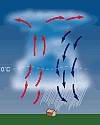 | The astronomer is, in some measure, independent of his fellow astronomer; he can wait in his observatory till the star he wishes to observe comes to his meridian; but the meteorologist has his observations bounded by a very limited horizon, and can do little without the aid of numerous observers furnishing him contemporaneous observations over a wide-extended area. - James Pollard Espy, American meteorologist (died 24 Jan 1860).  |
| Before you look at today's web page, see if you can answer some of these questions about the events that happened on this day. Some of the names are very familiar. Others will likely stump you. Tickle your curiosity with these questions, then check your answers on today's web page. |
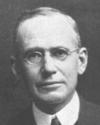 | Morris William Travers, born 24 Jan 1872, was an English chemist who, while working with Sir William Ramsay in London, discovered the element krypton (30 May 1898). Its name derives from the Greek word for “hidden.”
 How did Travers detect krypton? |
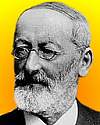 | On 25 Jun 1898, Ferdinand Cohn was born, a German naturalist and botanist who is considered one of the founders of bacteriology and known for his studies of algae, bacteria, and fungi, insect epidemics and plant diseases.
 What did Cohn conclude from his comparison of protoplasm in the cells of plants and animals? |
 | Charles Glen King (1896-1988) was a biochemist who isolated ascorbic acid from lemons after five years of painstaking research (1932).
 What is the commonly used name of ascorbic acid? |
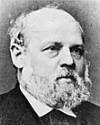 | Heinrich Geissler (1815-1879) was a German glassblower for whom the Geissler (mercury) pump is named. With the unprecedented (1/100 mm of mercury) low vacuum he produced another valuable tool for early physicists.
 What is this tool, also known by his name? |
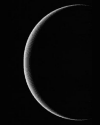 | On 24 Jan 1986, an American space probe made its first fly-by of Uranus at a distance of 50,679 miles (81,593 km) from the planet, taking dozens of photographs, and finding new moons.
 What is the name of this spacecraft? |
| On 24 Jan in a certain year, gold was discovered at Sutter's Mill, Coloma, California. This initiated the California Gold Rush. As recently as 2011, the discovery in northern California of a 100-ounce gold nugget was reported.
 In which decade did the California Gold Rush begin? |
When you have your answers ready to all the questions above, you'll find all the information to check them, and more, on the January 24 web page of Today in Science History. Or, try this link first for just the brief answers.
Fast answers for the previous newsletter for January 23: by analyzing the spreading of seismic waves with shallow depths through the Earth • ruthenium • microscope • Declaration of Independence and the U.S. Constitution • Marianas Trench • Marie Curie. |
 If you enjoy this newsletter, the website, or wish to offer encouragement or ideas, please send feedback by using your mail reader Reply button. If you enjoy this newsletter, the website, or wish to offer encouragement or ideas, please send feedback by using your mail reader Reply button.
Your click on a StumbleUpon, Google+ or Facebook social button on the site webpages is also a welcome sign of appreciation. Thank you for using them. |
To find citations for quotations go to the corresponding webpage by clicking on the “quotes” balloon icon. Sources for the thumbnails appear on today's webpage with the corresponding item.
� This newsletter is copyright 2014 by todayinsci.com. Please respect the Webmaster's wishes and do not put copies online of the Newsletter � or any Today in Science History webpage. (If you already have done so, please remove them. Thank you.) Offline use in education is encouraged such as a printout on a bulletin board, or projected for classroom viewing. Online, descriptive links to our pages are welcomed, as these will provide a reader with the most recent revisions, additions and/or corrections of a webpage. For any other copyright questions, please contact the Webmaster by using your mail reader Reply button. |
--
If you do not want to receive any more newsletters,
Unsubscribe To update your preferences and to unsubscribe visit
this link 






 How did Travers detect krypton?
How did Travers detect krypton? 
 What did Cohn conclude from his comparison of protoplasm in the cells of plants and animals?
What did Cohn conclude from his comparison of protoplasm in the cells of plants and animals? 
 What is the commonly used name of ascorbic acid?
What is the commonly used name of ascorbic acid? 
 What is this tool, also known by his name?
What is this tool, also known by his name? 
 What is the name of this spacecraft?
What is the name of this spacecraft?  In which decade did the California Gold Rush begin?
In which decade did the California Gold Rush begin?  If you enjoy this newsletter, the website, or wish to offer encouragement or ideas, please send feedback by using your mail reader Reply button.
If you enjoy this newsletter, the website, or wish to offer encouragement or ideas, please send feedback by using your mail reader Reply button. 

Δεν υπάρχουν σχόλια:
Δημοσίευση σχολίου